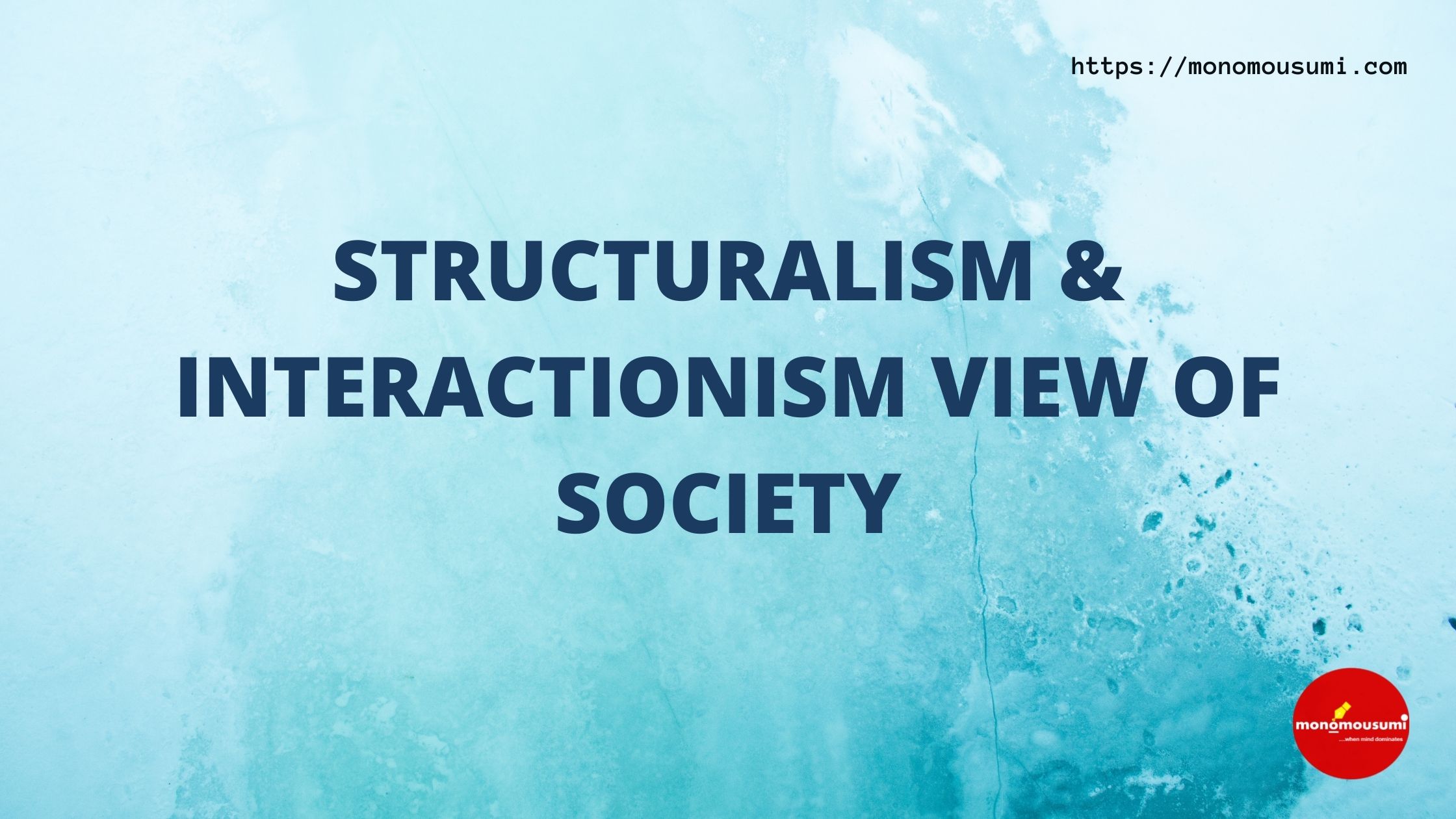
In order to analyse society, human behaviour and probe into the roots of social identity, sociologists have taken into account two salient perspectives. These theories depict diverging views on what motivates people to behave as they do and what constitutes the heart of our communities. Indeed, the structural approach lays emphasis on how society holds the upper hand of the individual while interactionism advocates strongly that it is the individual who shapes his social reality and chooses his own values.
In fact, structuralism epitomises a macroscopic point of view which translates how society should be studied in a scientific, general and objective way and that social forces mould the self-concept and set of values an individual abides by. It is pivotal to outline how for them, people connotes passive puppets who act as per the expectations of society in order to become conformists and feel a sense of integration and belonging. No doubt they view the socialisation process as a one-way learning stage where individuals have now power over the society they live in. Interestingly, functionalists like Durkheim adopt a structural stand while analysing the relationship between society and the individual.
However, for the theory of interactionism, members of society represent active social actors and conscious people who have the freedom to negotiate their social identity. It is vital to underline how for them, socialisation incarnates a two-way cultural learning. Children, after interacting with significant others (parents) and generalised others (friends, teachers, mass media among others) have the right to choose which attitudes and values to accept or to reject in the social construction of their personality. Admittedly, the interactionist Mead and Beck deeply say that individuals have the ability to influence societal rules and standards as well as develop meanings attached to specific objects or social situations. As per this microscopic optic, individuals possess free will and can create their subjective way of living. Coupled to that, social actions embroider our social reality and through two-way interactions, people render social situations meaningful.
Added to that, structuralism, as a striking school of thought denotes the lack of independence of individuals as their behaviour symbolises the social product of the conditions they have grown up in. According to this deterministic logic, the structure of society controls what is deemed as acceptable to be a good citizen. For instance, the conflict theory of Marxism reveals how social institutions must be inevitably associated with the ruling class ideology of the capitalist society which acts as scaffolding to continuing class inequality and the passive acceptance of exploitation by the proletariat.
On the other hand, it is worth noting how interactionism pays attention to social exchanges being a myriad of reciprocal adaptation, actions, and reactions in order to communicate well with others. From this standpoint, individual differences, conflicts and cooperation are highlighted. Added to that, this theoretical perspective stresses on how individual behaviour is not only influenced by one’s environment but also by his own perception of things. As said by the interactionist Skinner, our reaction and attitude depends quintessentially on the type of situation we are in, which alludes to the concept of Situationism in psychology. Subsequently, behaviour is unpredictable and not fixed. Without an iota of doubt, the symbol attached to events or objects vary across cultures, time and space. In addition, we react to other people depending on the meaning we interpret from them. Needless to linger on how this illustrates that our social identity is based on how other people see and define us.
Besides, structuralism uses more quantitative methods and data in order to study the social world so as to establish statistical comparisons and identify trends. Relevant examples pertain to structured interviews and close-ended questionnaires. It becomes clear that this methodology infers that the characteristics of social life cannot be disassociated to a larger, dominating system. On the same wavelength, their aims reside in fathoming the social variables behind the reason people think or feel in a certain way. What attracts their interest is the analysis of power relationships within and among the different social groups. In this way, they can observe the elements constituting the social hierarchy and trace levels of power. Undeniably, this has been particularly useful for studies concerning social class, racism and sexism.
As for interactionism, more subjective research tools are preferred, encompassing qualitative information and methods like unstructured interviews, content analysis, field experiments or group interviews. Consequently, they can dig into why some things happen like crime and not just know how much these social phenomena occur as their methods of research yield valid and subjective data.
In light of the above discussion, these two rival perspectives contribute substantially in delivering a clearer picture of society and human behaviour in their own ways. While structuralism concentrates on society as determining human behaviour, interactionism focuses on the freedom of individuals in shaping a reality of their own. An in-depth analysis of this topic would argue that combining both theories would offer a more conducive and enriching perspective on society and this mixed approach is known as the structuration theory.
By Dulall Shazia Fatimah


